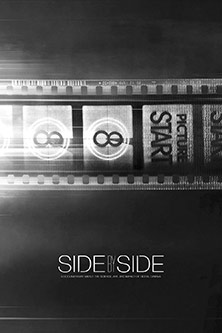Reel Life: Format wars II: The digital age
 CREDIT: COMPANY FILMS
CREDIT: COMPANY FILMSThe debate goes on. Side By Side gives a good look at both pro film and pro digital advocates.
What do Christopher Nolan, Quentin Tarantino, Paul Thomas Anderson and Martin Scorsese have in common? If you’ve answered their insistence on using film, you’re probably aware of the ongoing fight to keep the medium of 35 mm filmstock alive, mostly by a shrinking handful of filmmakers.
It’s pretty overwhelming to see just how quickly digital took over once the cameras seemed to be able to work at least a fraction on par with film. With filmstock development labs shutting down constantly, Kodak on the verge of bankruptcy and, conversely, the constant hype of new digital cameras being released and praised by big-league filmmakers like Peter Jackson and Nicolas Winding-Refn, the death of 35 mm film seems to be a natural progression towards inevitability, a technology that, while responsible for hugely impacting the world in ways innumerable, is now no longer needed in the world.
So why this insistence, this push towards the preservation of this medium?
It’s tradition
With all the history behind it, it just seems wrong to push film aside for shiny new toys. After all, film is just that, filmstock. Digital formats and cameras come and go, but the basics of film technology haven’t changed in years.
Image quality
It’s an argument that’s lasted since digital went mainstream. Pixels vs. grain size, dynamic colour ranges, tone and capture, blah, blah, blah. It all gets technical, but film purists insist that the medium just can’t be surpassed in image quality.
Workflow
Film can be cumbersome to work with, but the slowness of the process may be an advantage. The rushed workflow that comes with digital’s convenience means less time left in between setups to germinate new, inspiring thoughts, or to simply rest. Editing on a linear film table meant putting conscious thought into deciding between a cut and a dissolve. Faster production for a fast-consuming age, but does the artful thought get ousted in the rush?
Digital is far from technological evil, of course. Without digital formats, the entire world of independent filmmaking as we know it would be severely crippled. Ambition only goes so far when you can’t afford to purchase and develop filmstock.
No doubt, however, with important filmmakers continuing to embrace film and encourage a return to the format that the format will be seen as complementary to digital, both having their place in the world of cinema. Side By Side, an documentary narrated by Keanu Reeves, is probably the best place to view both sides of this ongoing debate.
Of course the end product – quality cinema – is what we should ultimately care for. But just how much can the shooting medium of a movie affect its outcome?













